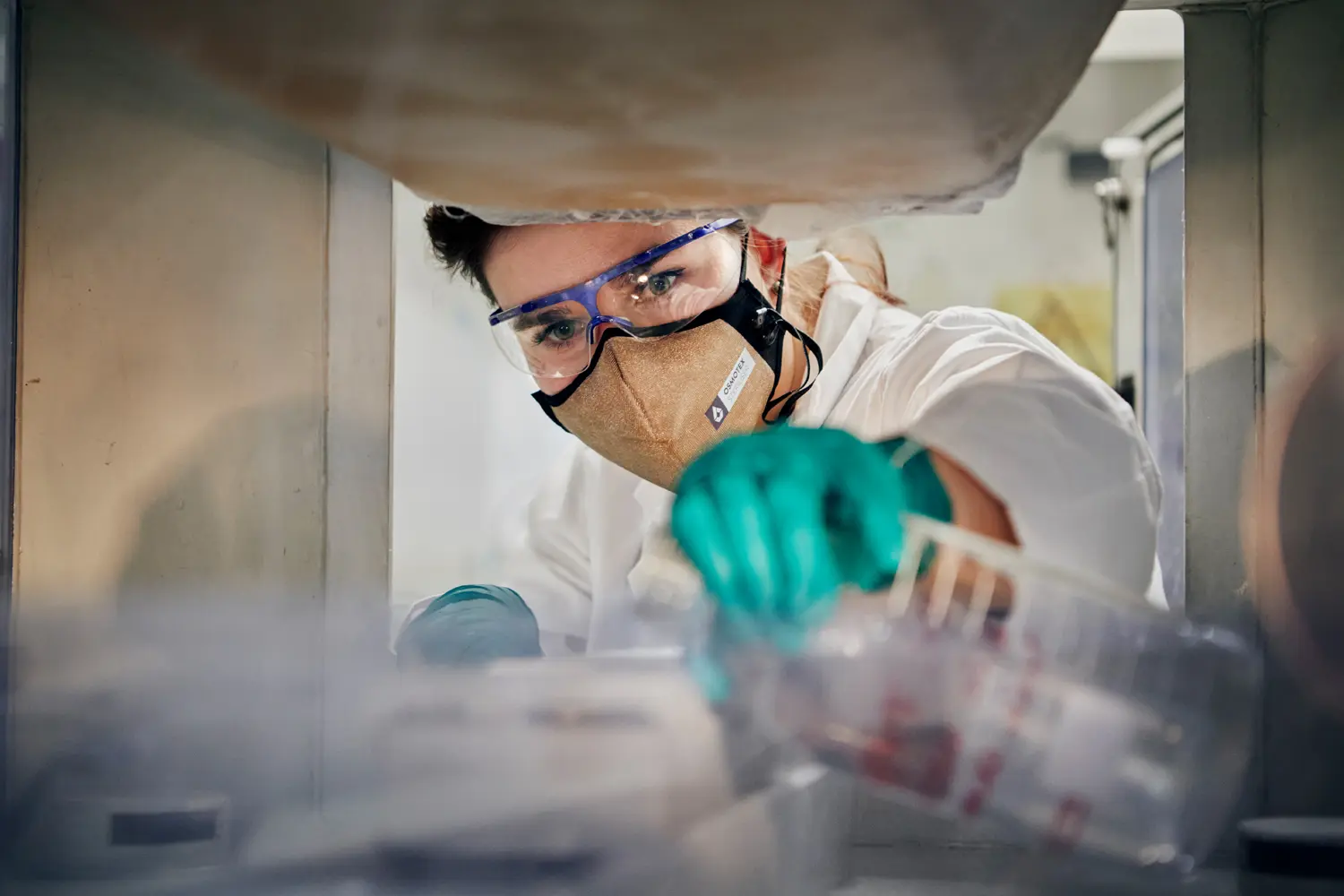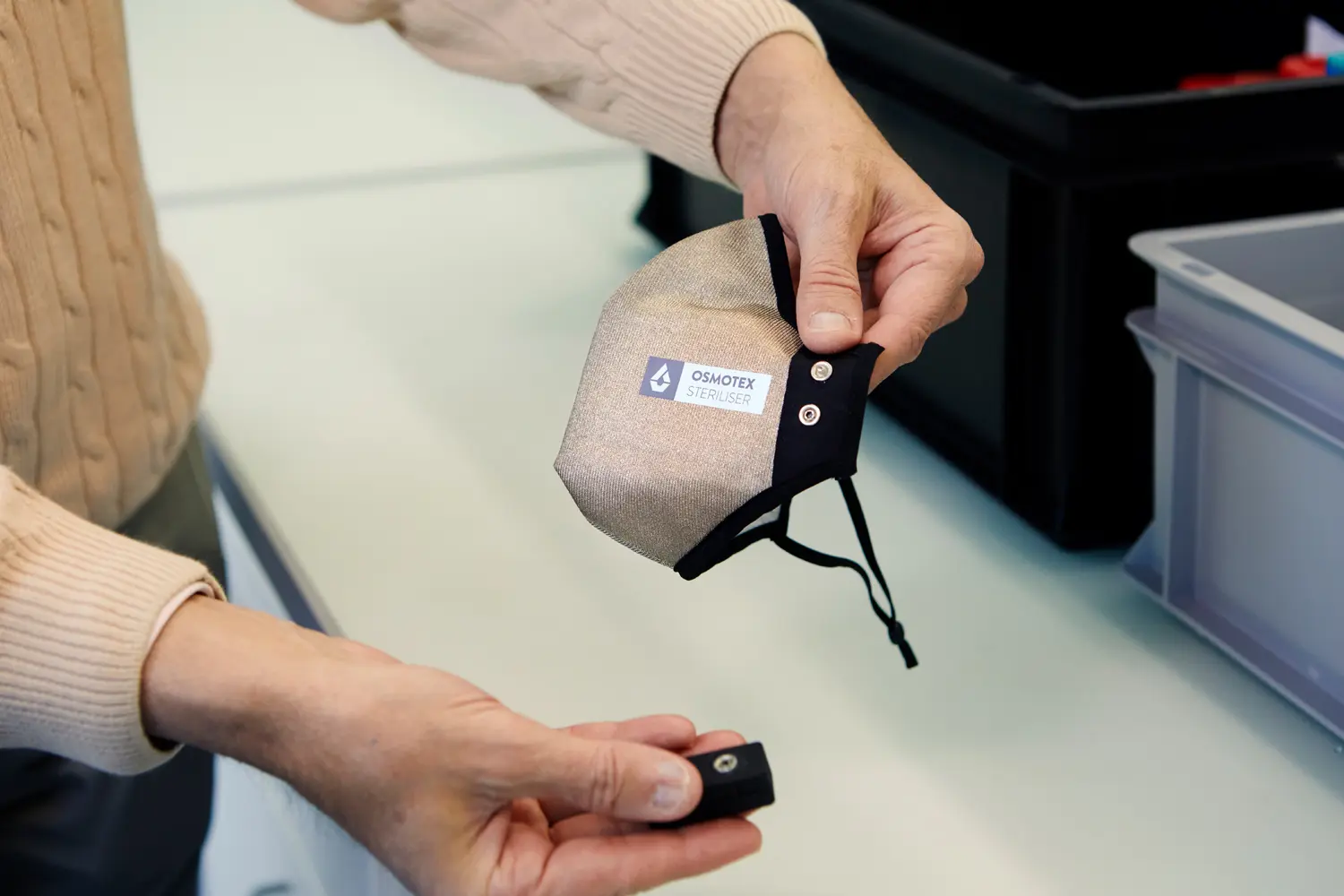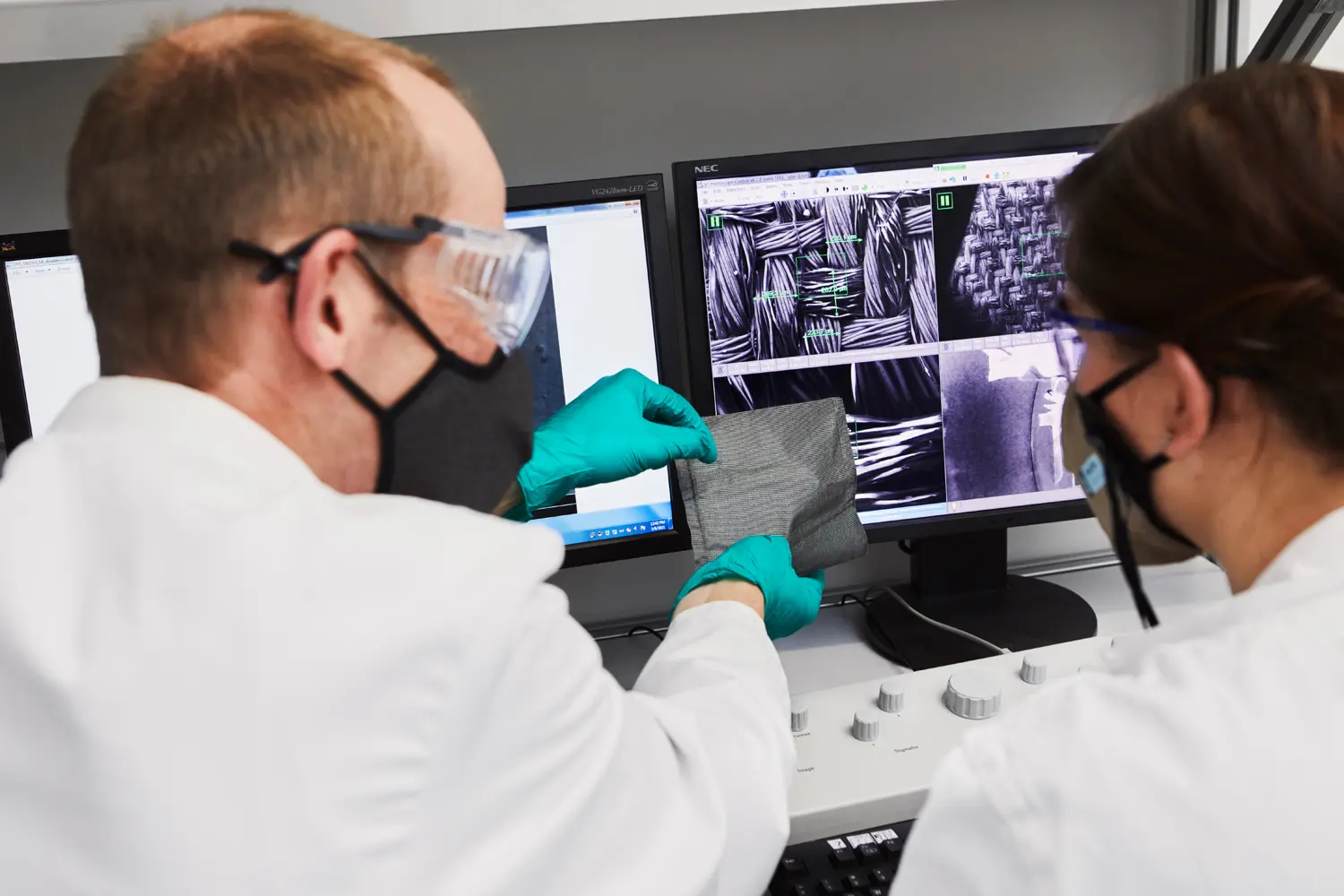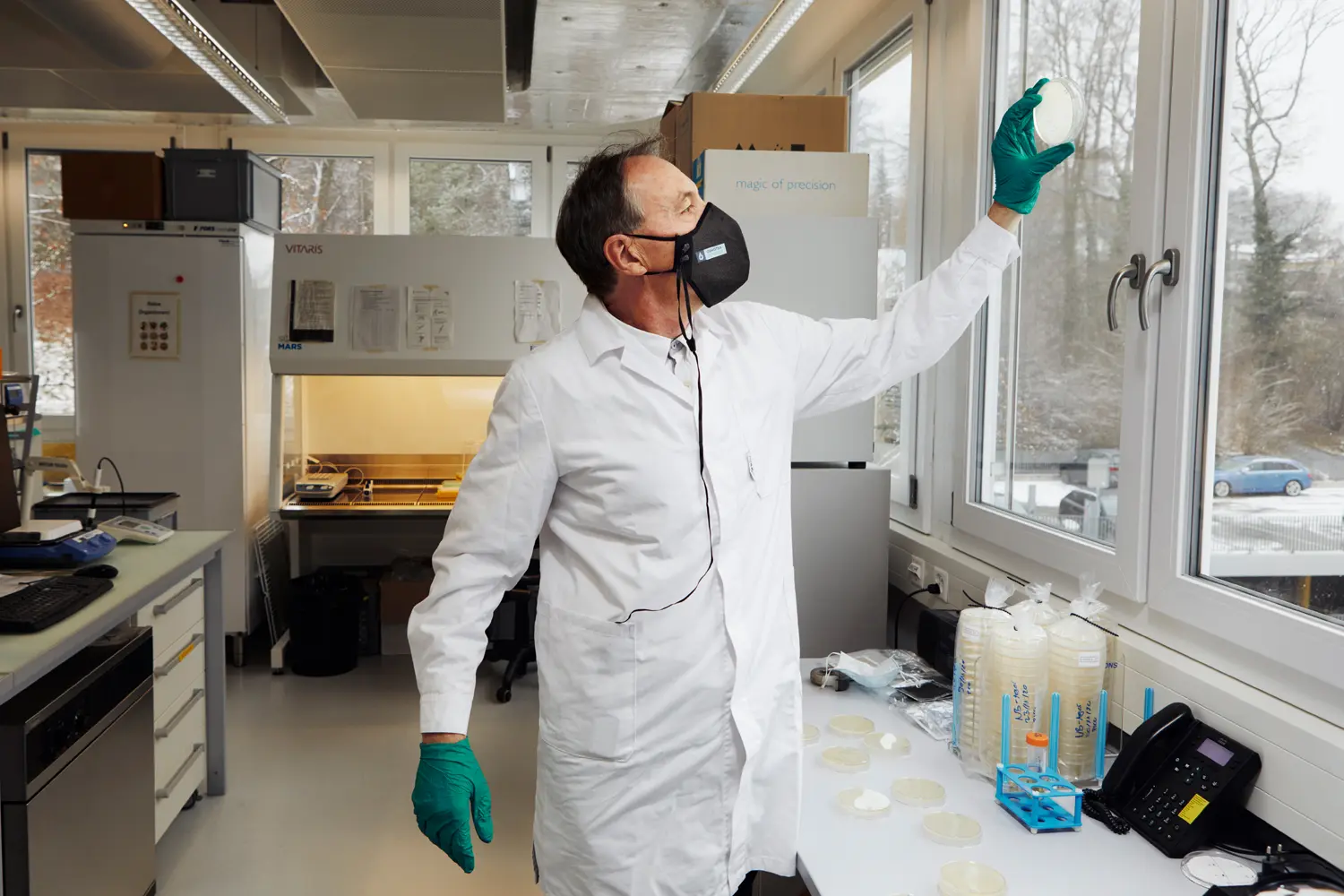Self-disinfecting mask gives active virus protection at the touch of a button
ZHAW researchers, together with the Swiss company Osmotex AG, are developing a self-disinfecting mask that makes viruses inactive at the touch of a button. The prototype of the mask made from electrochemical textiles, which is like no other worldwide, has an antiviral effect of more than 99%. Further applications such as sterilisable seat covers are being examined.
Whether made of cellulose or fabric, protective masks have become an indispensable part of our everyday lives. In today’s models, their protective effect is based on the filtering of aerosols or, in addition, on the passive inactivation of viruses by means of charged surfaces, for example using silver cations. To ensure that the masks provide reliable protection, they must be worn correctly and replaced or professionally washed as appropriate. A protective mask that can be sterilised at any time at the touch of a button would have significant advantages. This is where the ZHAW and Osmotex, a company based in Thalwil, near Zurich, come in: using innovative electrochemical technology, viruses and other pathogens can be rendered harmless not only passively, but also actively. A prototype of this mask is currently being optimised by three research groups at the ZHAW Institute of Chemistry and Biotechnology in Wädenswil. The researchers have been able to demonstrate that the innovative mask is safe and poses no health risks. It should be ready for the market by spring 2021 at the latest.
First mask with electrochemical technology
According to Osmotex chief technologist Trond Heldal, the results have so far been very promising: “Our “Sterilizer Mask” would be the first mask worldwide that can be sterilised electrochemically – both quickly and reliably. We have already patented the process,” explains Heldal. “Thanks to the ZHAW’s scientific know-how, we have been able to optimise the mask and achieve marketability within a short space of time.” The project, initiated jointly by ZHAW chemist Chahan Yeretzian and Osmotex, is supported by the federal government’s funding agency Innosuisse with CHF 902,000 and has a budget of CHF 1.7 million. Chahan Yeretzian’s team is responsible for ensuring the mask’s safety and ZHAW microbiologist Martin Sievers’ team for its efficiency, while ZHAW chemist Christian Adlhart’s team is concerned with its material. “After documenting the effectiveness of the electrochemical technology in a study in the summer of 2020, we are now working on optimising this technology for sterile protective masks and making it suitable for everyday use,” says Yeretzian.
Sterilisation at the touch of a button
The innovative mask comprises a special multilayered material, as well as electrodes and a voltage source. An insulating membrane lies between two conductive layers. Thanks to an integrated battery that can be recharged via a USB port, just a few volts can be applied at the touch of a button. This generates reactive oxygen molecules that reliably inactivate viruses and bacteria, so that the surface of the mask can be sterilised in just a few minutes – even when it is being worn. The applied voltage and the reactive oxygen molecules generated are minimal and absolutely harmless to humans.
Which reactive oxygen molecules are produced and how efficient these are in inactivating the pathogens depends on the voltage and materials used. The ZHAW researchers are currently working under laboratory conditions to find the optimal mix. “Depending on the voltage and the structure of the textile, we can achieve virus inactivation of more than 99%, doing so in compliance with much higher standards and in less time than recommended for antiviral textiles,” says ZHAW project manager Sebastian Opitz. The sterilisation efficiency could therefore be specifically adapted according to the area of application.
Potential for further applications
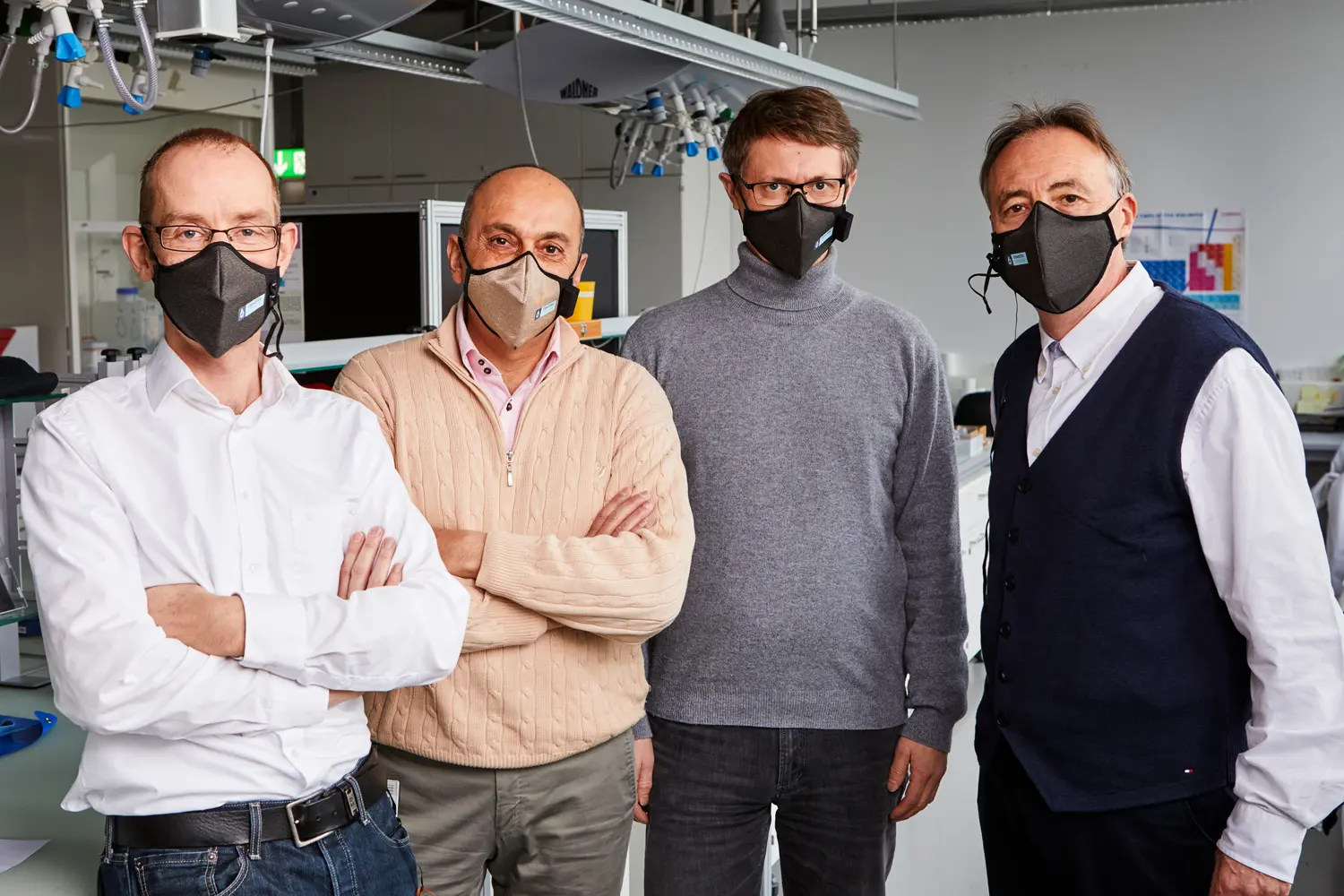
The great potential of the Osmotex electrochemical process had already been demonstrated earlier during the development of “intelligent” sports textiles that actively conduct sweat outwards. Within the framework of the Innosuisse project, Osmotex and the ZHAW researchers therefore also want to extend this technology to other applications, for example seat covers and other textiles used in the public sector. The list of potential application areas is long: hospitals, rescue teams, hotels, public transport, offices and workplaces. Expensive, as well as potentially dangerous, chemical substances or UV systems could thus be replaced. “Electrochemical sterilisation could therefore even be an answer to the growing problem of multi-resistant hospital germs,” says Chahan Yeretzian. However, everyday applications are also conceivable. For example, a handbag could be used for the simple sterilisation of objects such as keys, mobile phones or coins.
Downloads
- Media release “Self-disinfecting mask gives active virus protection at the touch of a button”(PDF 195,0 KB)
- Photo 1 “The innovative mask inactivates viruses and bacteria using low voltage.”
- Photo 2 “The mask comprises a multilayer textile, electrodes and a small battery.”
- Photo 3 “Chemist Christian Adlhart and research assistant Lucie Filipová work on optimising the membrane.”
- Photo 4 “Martin Sievers’ team is investigating how efficiently the viruses can be inactivated depending on the voltage.”
- Photo 5 “Research assistant Nicolas Wernli and project manager Sebastian Opitz test the safety of the mask.”
- Photo 6 “The interdisciplinary research project team”
- Photo 7 (portrait format) “The innovative mask deactivates viruses and bacteria using low voltage.”
- Photo 8 (portrait format) “ ZHAW researcher Sebastian Opitz tests the safety of the mask.”
Contact
Prof. Chahan Yeretzian, Institute of Chemistry and Biotechnology, ZHAW School of Life Sciences and Facility Management, phone +41 58 934 55 26, e-mail chahan.yeretzian@zhaw.ch
Cornelia Sidler, Media Relations, ZHAW School of Life Sciences and Facility Management, phone +41 58 934 53 66, e-mail cornelia.sidler@zhaw.ch
